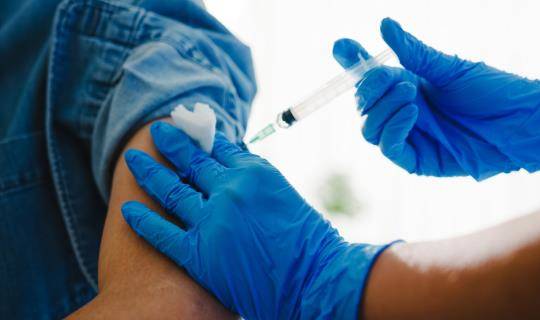Unique challenges of cell and gene therapies
By Andrea Zobel


The cell and gene therapy (CGT) market continues to evolve at breakneck pace with a growing number of trials kicking off continuing to increase. Nearly all of today’s large pharmaceutical organizations are licensed to conduct advanced medicinal therapy product (ATMP) trials or have acquired at least one as part of their product portfolio. Despite this huge growth of the industry, new companies specializing in CGTs are chiefly founded by scientists and face challenges in securing funding.
This is resonating globally, and even in countries such as the U.S., these organizations cannot secure the investment they need to execute trials. Partnerships are steadily increasing, but it typically leads to a catch-22 situation, where investment can only be secured after a first proof of concept with promising results, which itself requires significant investment to be able to be conducted.

As of 2022, there were 222 new CGT clinical trials in the works, and these were concentrated within the APAC region, that has a healthy number of trials at phases 1, 2, and 3 of the development pipeline. North America follows just marginally behind APAC, followed by the EU, where we have seen development slow to a trickle.

An evolving industry
Whereas in the early development years of CGTs, use of genetically modified cells was mainly successful in the sphere of oncology with the first therapies suited to varying types of blood cancers such as CART-T, a wider range of indications are now in development. In the scope of cancer research, solid tumors fit into the scope of predominantly immune system modulation cell therapies, while simultaneously new modalities like gene editing agents such CRISPR/Cas9, and mRNA therapies.
In addition to gene therapies mainly for rare disease with a single gene defect, indications with a wider patient population are in development. For example, therapies for diabetes, multiple sclerosis, and heart failure are already in clinical development with very large patient populations. Most of these utilize cell therapies and tissue-engineered products, but others involve innovative concepts such as 3D printing of tissues. Furthermore, new formulations and therapy administration technologies are continuing to develop, such as those for obstructive lung disease that are administered through inhalation. Others include:
- Printing of slet cells for diabetes type 1 treatment.
- Development of heart cells for implantation by catheter.
- An inhaled gene therapy for cystic fibrosis.
The balance of therapy types will shift too: while the number of autologous cell therapies available may be currently overweighted, this will tip towards allogenic therapies and gene therapies in the future.
The implications for logistics will be a wider range of shipment solutions necessary to be developed to cover the demands of a wider variety of CGTs. Tailor-made liquid nitrogen (LN2) shippers for autologous cell therapies alone will be insufficient. More temperature ranges (not just cryogenic) and greater capacities will be required too to cover the greater number of trials that will break through to the commercialization phase. Pharmaceutical logistics depots must offer sufficient storage space and the labeling capabilities for all manner of CGTs on both a regional and global level.
However, reaching the commercialization phase still proves to be a huge challenge for a majority of trials. For autologous cell therapies, the lack of sufficient manufacturing capacities and time criticality of therapies persist as major hurdles for commercialization. Some distribution processes, and especially those using cells with a short shelf life are feasible in a clinical trial setting, but not scalable for commercialization as global distribution is not cost effective. Either large manufacturing centers are to be built, or decentralized models can be explored more.
For allogeneic cell therapies, the cryogenic supply chain with — insufficient storage and labeling capabilities — is currently facing a bottleneck due to continuously growing demand and requiring larger shipper solutions. As an example, even phase 3 clinical trials shipments often contain hundreds of vials or bags, meaning the need for 10 to 30 dry shippers. Larger shippers are in development to meet this demand but are currently unavailable. For an effective commercial supply chain, large movements of therapies across the globe must be anticipated.
At the same time, vector-based gene therapies require a deep-frozen supply chain which is currently available. However, the hurdles for commercialization are bottlenecks in production and high cost which creates availability shortages and makes recovering investment tricky. Logistics partners are still upscaling through continued investment to handle this ballooning supply chain, while also developing specific solutions — such as very small shippers for single patient dosage shipments — to help overcome these challenges.
As these CGTs continue to develop though and better manufacturing technologies replace existing ones, costs will plummet. Standardization of the industry will bring about benefits such as fixed dose sizes which are stored in qualified depots and distributed to treatment centers on demand. Meanwhile, logistics providers such as World Courier continue to develop their global network of depots and distribution hubs with cryogenic storage, labelling, and distribution capabilities.
The vast differences in shipment sizes — from a few milliliter vials up to capacities of hundreds of thousands of vials and bags — will benefit from standardization. Greater adoption will see more efficient supply chains as shippers can be homogenized too, doing away with the need for a mix-and-match approach of shippers, cryoboxes, and racks.
CGTs still a regulatory mine field
Regulatory framework for CGTs continues to trail behind scientific progress. They are typically grouped with other chemical entities and biomolecules and thus subject to the same regulations, leading to compliance issues and ultimately affecting therapy availability and safety. Examples include labelling and import regulations for ATMPs in the EU and the classification of CGTs for transportation as dangerous goods.
In upcoming changes of EU pharma legislation, there are several changes in the pipeline that will hopefully positively impact CGTs. New therapies such as mRNA and gene editing are included, and how CGTs are classified will be modified to mirror the latest research. However, concerns arise: hospital exemption of good manufacturing process (GMP) standards as routine for CGT manufacturing with the goal of greater patient access and reduced costs. This may bring about risks to GMP system quality standards and thus contrary to its intended aim, affect patient safety and therapy efficacy.
Another potential flashpoint is change in harmonization of genetically modified organism (GMO) regulation, which is currently country specific. Though a positive change, CGTs will still remain classified as GMOs. The GMO classification was originally developed for agriculture to address potential unanticipated damage to the environment. Manufacturers must provide risk assessments for therapies, despite them having negligible risks for the environment due to the lack of viability outside the human body or in tissue culture conditions. Though not considered dangerous goods, misunderstanding of regulation often garners CGTs this classification, thus incurring costly and riskier distribution and increasing likelihood of therapies experience time and temperature excursions during transport and rendering them nonviable.
Committed and listening to the industry, we continue and expand our CGT capabilities to respond to new therapies. Across our global network of dedicated team members, we monitor the safety and integrity of your product proactively, ensuring it reaches patients without delay.
Leveraging our global capabilities and local, on-the-ground knowledge to navigate logistics complexities, World Courier can help create the cryogenic supply chain needed to bring breakthroughs to patients reliably and at the potentially life-changing pace they need.







